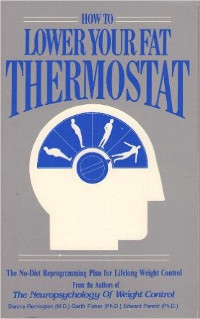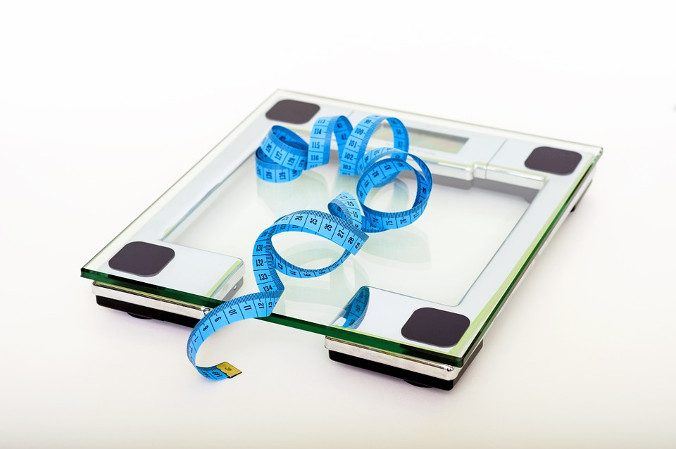At first glance, the topic of losing weight has nothing to do with Zion. In my own life, however, my decades-long quest to lose weight has paralleled and strongly influenced my quest to attain Zion, both as an individual and in my relationship to the larger community. The reason for this is simple: If I want to become holy, my spirit needs to be in control of my body, and if I want to live a life consecrated to God, I need the physical and emotional strength and stamina to live a life of service.
The actual process, however, has been complex and isn’t finished. Losing 100 pounds is an enormous milestone in this quest, and because so many people I know have asked how I did it, I’m going to deviate from my normal posting style for the next few months and share brief information about books that have significantly helped me, along with quotations from some of them that particularly struck me when I first read them and have stuck with me ever since.
None of these books promote popular commercial programs. None of them offer gimmicks or quick fixes. None of them advocate eliminating entire food groups on a permanent basis. All of them advocate eating healthy foods in balanced amounts. Some of them allow for more modern convenience foods than others. Some of these books are out of print, and some of the information in them is out of date. Instead of telling you how information in any of the books may be out of date, I’ll provide the copyright year of the book for context. Where the books most differ is in the macronutrient ratios they recommend, and for that reason, I will give those facts for every applicable book if they are available.
As I share these books, please keep in mind that I’m not a doctor or a dietitian. I do not recommend or endorse a particular health regimen. My intention is to provide a few insights into what has worked for me at various times of my life. The information in these posts is no substitute for individual medical advice, and you use it at your own risk. These books, in the end, were not even enough for me. I lost the final 40 pounds by working with a registered dietitian. I’ll tell you more about that in the fourth post of this series.

All of the mainstream nutritional information I was taught as a child and young adult was based on the “Basic Four” food groups. To give you an idea of how my youthful brain actually interpreted this information, at the forefront of the “cereals and breads group” was white bread and cold cereal with sugar either in it or on top of it. The foods I ate most frequently in the “vegetables and fruits group” were mashed potatoes and canned corn. I resisted eating lettuce or any type of leafy salad until I was an adult. I hated milk, but I could eat it with cereal or as pudding, and I could drink it if it had chocolate in it. I assumed that once I had eaten the required servings of grain, vegetables and fruits, meat, and dairy for the day, I could eat whatever I wanted.
As a child, I didn’t get fat eating this way, but as a teenager and young adult, I wasn’t always as thin as I wanted to be. From time to time I went on a “diet” in an effort to get my weight back down, and none of them were healthy—some of them were bona fide crash diets. They all helped me lose weight for a period of time, but none of them helped me develop a strong, well-nourished body. The first book I read that had the potential to help me become truly healthy was this one:

How to Lower Your Fat Thermostat, by Dennis Remington (M.D.), Garth Fisher (Ph.D.), and Edward Parent (Ph.D.) © 1983
“Based upon this exciting scientific research, HOW TO LOWER YOUR FAT THERMOSTAT introduces an entirely new concept in weight management. By lowering that fat thermostat (setpoint) and changing the body’s hormonal, enzymatic, and metabolic systems that normally protect fat stores, you will lose weight comfortably—without painful dieting.”
This program is an example of healthy low-fat eating, and it was created at a time when there were very few low-fat products on the market. To follow a low-fat diet in those days, a person had to rely more on whole foods. As time passed, low-fat products flooded the market, paradoxically rendering low-fat eating much easier to do, yet far less healthy than it was ever meant to be.
The authors recommend eating 20% of daily calories as fat, with only 3.5–4 ounces of lean meat a day. They believe that most of our daily food intake should come from complex carbohydrates such as whole-grain cereals, brown rice, potatoes, squash, carrots, tomatoes, and apples, and that “these foods should be eaten as they are grown, without processing them to some other form” (p. 24). This book also recommends engaging in aerobic exercise at a moderate intensity, starting at 20 minutes a day and building up to an hour a day.
Many health experts still advocate low-fat diets similar to this one, and many others condemn low-fat eating all together. My own experience has been that regularly keeping my fat percentage between 20–25% of my daily calories did help me lose weight for many years without feeling deprived.
White flour stores well because most organisms can’t live on it. That should tell us something about its value as human food. (p. 131)
A decrease in fat always occurs as a result of regular exercise, but the amount of loss varies from person to person. . . .
One lady, a former state beauty queen, exercised for nearly a year in an adult fitness program before major changes in body composition occurred. However, she was exercising only 20 minutes a day, three times a week. A college-aged girl experienced the same problem while exercising three days a week. When she increased to a daily program of about an hour a day, the “mechanism” seemed to come “unstuck” and she experienced satisfactory weight loss. This may seem somewhat discouraging, but these two ladies had long-time weight problems and realized success for the first time in their lives by exercising faithfully. (pp. 8–9)
At the time I learned about this book, I thought I needed to lose 50 pounds. In reality, however, I was less than 20 pounds over my current weight. I had this wonderful information on my bookshelf, but I wasn’t ready to follow it, and neither was my family. I learned about fat-gram counting and found that to be easier and less demanding than the whole-grain, low-sugar eating style recommended by the authors of How to Lower Your Fat Thermostat. Instead of using my time and resources to learn how to make vegetables taste good, I worked to alter desserts and other rich foods to contain fewer fat grams. I did begin using leaner meats during this period and learned how to incorporate whole wheat flour into some of my recipes, but these measures didn’t help me enough. Instead of finding a permanent weight-loss solution, I gained 80 pounds during the 1990s.
The featured image came from Pixabay.



